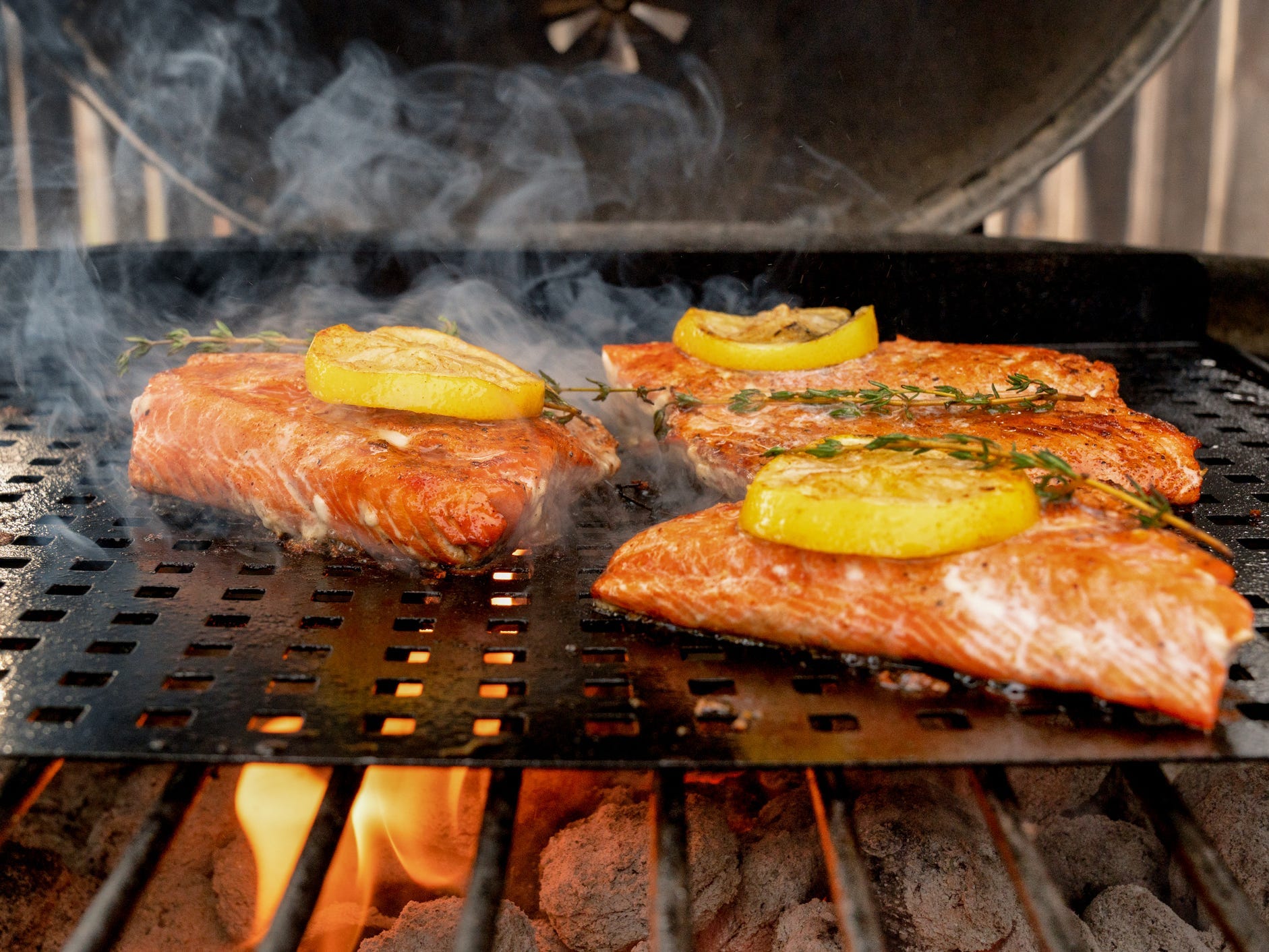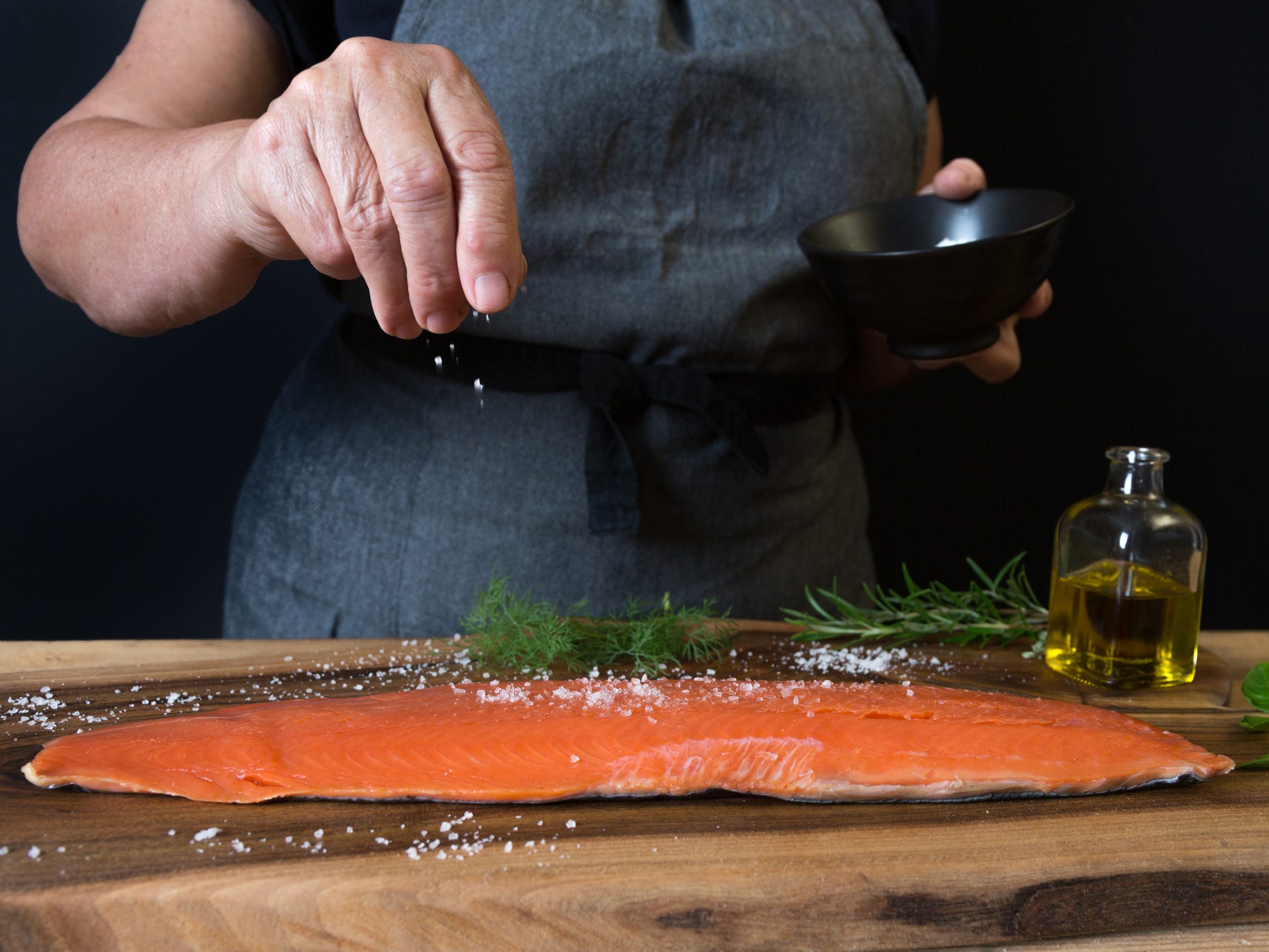
grandriver/Getty Images
- Grilling salmon is a simple technique to ensure flavorful, flaky fish every time.
- Salt your fish at least 10 minutes prior to grilling, and keep the skin on to help keep it moist.
- Cook your salmon to an internal temperature of 120 to 125 degrees Fahrenheit or until it's opaque pink.
- Visit Insider's Home & Kitchen Reference library for more stories.
Salmon is one of the most popular fish in the United States, and the full-flavored flesh is sturdier than white fish making it perfect for grilling. The rich flavor complements the smokiness and char imparted by your grill.
What is the best salmon to buy for grilling?
Among the same species, wild-caught salmon tend to be a little bit leaner than farmed salmon, but the species and thickness of the fillet make the biggest difference in taste and how it should be cooked. The leaner and thinner your salmon is, the faster you'll want to cook it, so there's no chance of it drying out.
King salmon are a favorite because they have more fat and the fillets are thicker, which protects it from drying out on the grill. A thinner, leaner fillet of Sockeye, Coho, or Chum salmon can still be delicious on the grill, but will require a little more finesse and a quicker cook time.
Coho and Pink salmon tend to be milder, while Sockeye salmon have the strongest "fishy" flavor. Copper River King salmon are considered by fine-dining chefs to be some of the best and most buttery in the world, with especially high Omega-3 fat content.
When shopping for salmon, look for responsibly managed fisheries that minimize their ecological impact. For example, Sitka Salmon Shares is a community-supported fishery (CSF) that delivers wild-caught blast-frozen Alaskan salmon from small-boat fishermen. Oshēn Salmon offers individually packaged, sustainably raised Atlantic salmon fillets.
How to prep salmon for the grill

alle12/Getty Images
Look for small to medium fillets, always with the skin on. A 6- to 8-ounce fillet tends to be easiest to cook and a good portion size. "Ask your fishmonger for a center-cut fillet, between 1 and 2 inches thick," says Grace Parisi, culinary director of Sitka Salmon Shares. "A thicker cut is easier to cook medium rare" - the ideal temperature for your filets.
Leaving the skin on protects the fish on the grill, but if you plan to eat the crispy skin, be sure to scale it thoroughly before seasoning.
Salt your fish at least 10 to 15 minutes before it hits the grill to firm up the flesh. Salt acts like a dry brine, pulling out moisture and making it easier to grill. Then, rub olive oil lightly over the fillet and season as you wish. Take this opportunity to remove any pin bones you may feel while coating your filets in oil.
"Usually, it's best to grill proteins at room temperature, for even cooking," Parisi says. "But I've found that it's ok to grill salmon chilled, as long as the grill is hot, especially if you like your salmon with crispy skin yet a little pink on the inside."
Prepping your grill
Clean the grates on your grill, then oil the grates with a neutral cooking oil like canola oil before you turn it on. Preheat the grill to a medium or medium-high heat. Don't put the fish on the grill until it's up to temperature, or it could stick. Use direct heat for more precise cooking.
It's easier to control the temperature on gas grills, especially for novices, but charcoal or hardwood grills impart a nice smokey flavor through the natural aroma of the burning coals. Charcoal and hardwood grills need an even coal bed with no flare-ups before you begin cooking.
Insider's Takeaway
You can grill any type of salmon, but the length of time you'll cook it and whether you flip it depend on the thickness and fat content of the fillet. Always leave the skin on, begin by cooking skin side down, and season with salt and pepper before it hits the grill. Cook your salmon to an internal temperature of 120 to 125 degrees Fahrenheit or until the flesh turns an opaque pink.